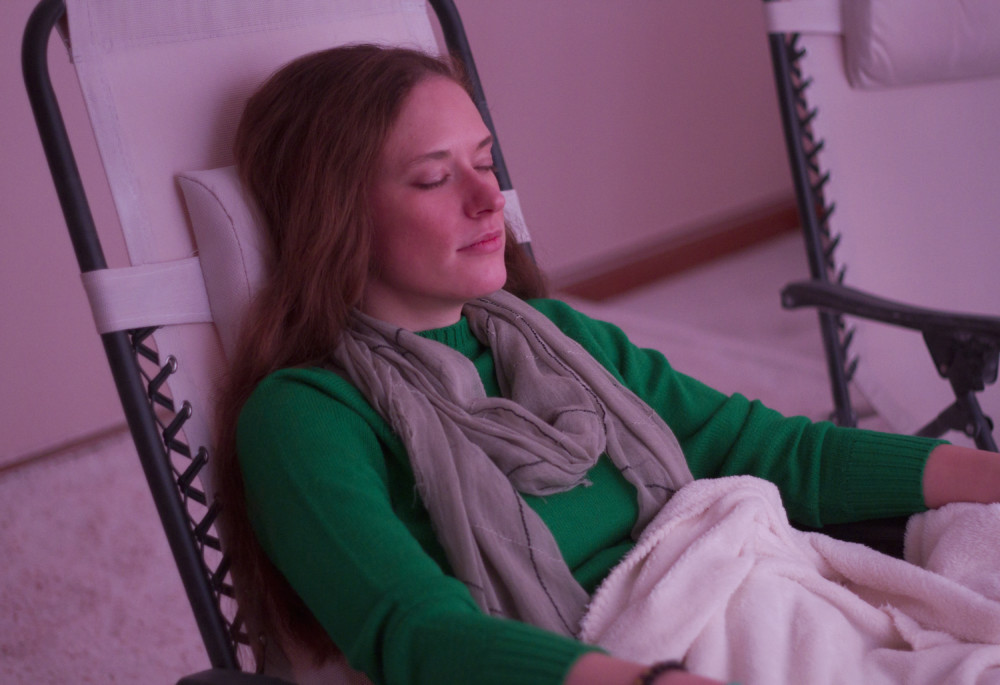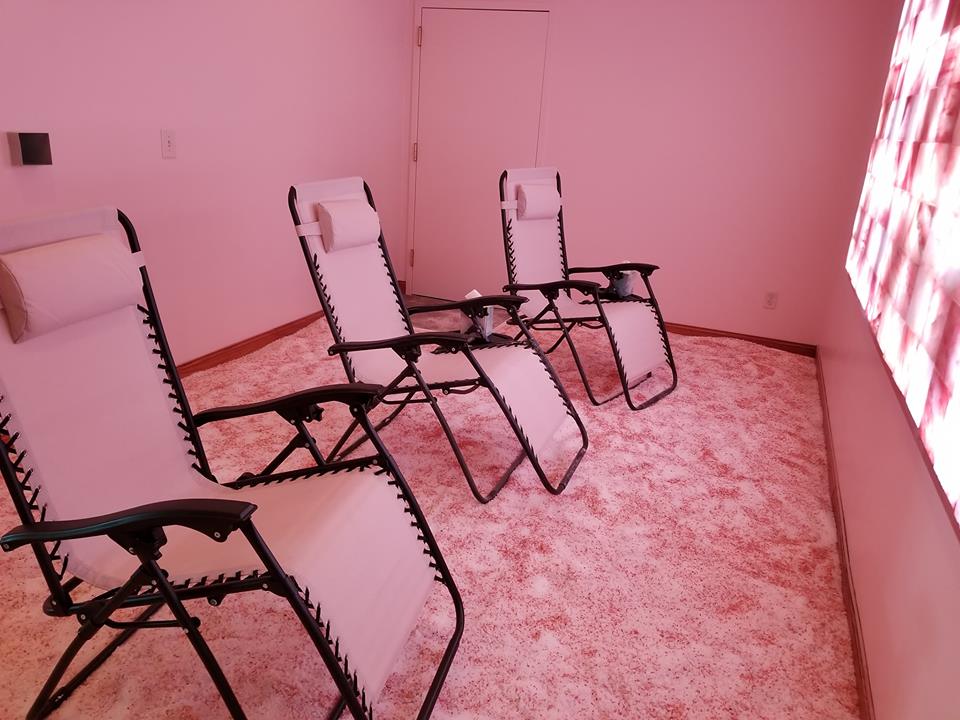Mind & Body Wellness
Integrative therapies complement conventional health care practices
According to a recent survey from the National Center for Complementary and Integrative Health, nearly one-third of Americans use health care approaches that fall outside of conventional medical care.
In the past, this was known as “alternative medicine,” a term that encompassed a variety of practices including prescribing natural medicines and therapies like acupuncture, yoga, chiropractic medicine and many treatments that address a range of physical and mental symptoms. These practices brought patients a natural alternative to prescription drugs and surgery, but have also been dismissed as pseudoscientific due to limited published research, a perception that alternative medicine is administered in lieu of conventional health care, and in some cases, scam treatments.
However, as emerging studies continue to influence our public understanding of these treatments, it turns out that some of these treatments are more beneficial than we once thought. In 2013, the Casey Health Institute performed a six-year trial at their Washington, D.C. clinic that emphasized combining conventional health care with acupuncture, chiropractic, massage therapy and energy healing in an “integrative medicine” mode. Their data revealed that patients needed fewer urgent care services and prescription drugs, plus they had lower hospital admission rates than patients under a conventional health care model.
Dr. Jennifer Norden, a primary care physician at ThedaCare Physicans-Neenah, has specialized in integrative medicine in Northeast Wisconsin since 1999. According to Norden, while conventional medicine is fundamental to good health, integrative medicine provides additional solutions that address the root cause behind patients’ health problems, which frequently includes stress or lifestyle issues.
“In conventional medicine, we tend to focus a lot on testing and imaging and that sort of thing, and sometimes that’s not where the answer is,” Norden says. “It might not look at what foods we’re putting to our bodies, or stress relationships to our symptoms.”
If you’re seeking an integrated medicine solution for your medical condition, it’s important to consult a doctor to learn more about your options, but if you’re looking for a general overview of great natural therapies here in the Fox Cities along with strategies to make informed decisions about your health, here are three integrative therapies to get your search started.
Valley Chronic Pain & Sports Acupuncture
Originating from traditional Chinese medicine, acupuncture is one of integrated medicine’s oldest treatments at 21 centuries old, though some historians argue it’s even older. In 2020, Pamela Kososki, licensed acupuncturist at Valley Chronic Pain & Sports Acupuncture, carries on the tradition in Appleton one needle at a time.
After an initial exam taking the patient’s medical history and symptoms, the acupuncturist places sterile needles at specific areas of the body, which Kososki assures isn’t painful at all, and instead is a great healing experience that “enchanges recuperative power, immunity, and physical and emotional health.”
“You really don’t feel the needles. You might feel a poke here and there, but there’s really no pain,” Kososki says. “A lot of my patients actually go to sleep on the table. It’s a very relaxing experience.”
As with primary care, acupuncture is very safe in the hands of an expert – acupuncturists receive extensive training at the graduate level and must pass a national exam to practice. Sterile needles are disposable to eliminate infection risk, though the World Health Organization advises that needling should be avoided in patients with bleeding disorders, malignant tumors and pregnancy.
According to Kososki, acupuncturists have historically treated a wide range of conditions from anxiety to allergies to smoking addictions, but so far, the most promising effects of acupuncture based on published research are on chronic pain, particularly lower back pain. A 2018 analysis of 39 trials demonstrated that acupuncture played a significant role in pain relief. Studies have also started to show positive associations between acupuncture and insomnia, fibromyalgia, hypertension, migraines, osteoarthritis and other conditions.
“It’s a great alternative to some model therapies that are out there, and it’s an effective one,” Kososki says. “You can save people from surgery, and not necessarily unnecessary surgeries, but there’s time we’ve been able to help people put off surgery or even avoid it with acupuncture, so it’s a very important thing to check out before having something like knee surgery or back surgery to see if that can help.”
Float Light
 Jonathan Roug, Float Light owner, brought floatation therapy, sometimes also known as “sensory deprivation therapy,” to downtown Appleton two years ago after seeing its potential to bring moments of escape to people with chronic stress, anxiety, PTSD, depression, or anyone who needs relaxation in a hectic world.
Jonathan Roug, Float Light owner, brought floatation therapy, sometimes also known as “sensory deprivation therapy,” to downtown Appleton two years ago after seeing its potential to bring moments of escape to people with chronic stress, anxiety, PTSD, depression, or anyone who needs relaxation in a hectic world.
Roug explains that for many people with mental health struggles, the fast pace of day-to-day events like sorting through personal obligations, replying to Facebook messages or navigating social interactions can create sensory overload which is often difficult to sort out. Floatation therapy is all about cutting off external senses.
Floatation therapy practices are consistent with psychological research on sensory overload, and while published research is still in early stages, a 2004 meta-analysis investigating 27 published studies revealed promising results on floatation therapy as an effective stress-management tool.
“The objective of floatation therapy is to eliminate as many senses as possible, and we do this by controlling the environment in every way,” Roug says. “The temperature of the water is heated to the exact temperature of the skin. If you turned off the lights, you’d see nothing at all. If you turned off the music, you would hear nothing. But most importantly, in only 10 inches of water, there’s 1,650 pounds of Epsom salt, dissolved. So you float on the surface, effortlessly, like you’re in space.”
In addition, floatation tanks are built large to avoid claustrophobia anxiety, and guests are told not to drink caffeine six hours before the float. Roug says all these considerations come together to create a peaceful, introspective experience across an hour, 90 minutes, or three hours, depending on the session type.
“It’s a self-healing process. Then you get done floating, and you’re just calm, at peace.”
Roug says the experience after the float is just as great as during – this is what floatation therapists call the “post-float glow” – and guests are encouraged to relax at Float Light’s lounge following the therapy. This inviting room is set up with comfy seats, warm-tone purple lighting, colored pencils and “float journals” to write and draw in. The float journals became a mainstay after guests requested something to write and draw in, and they exemplify the results of a 2014 study correlating floatation therapy with enhanced creativity.
“There are thousands of [entries], and they tell quite a story. When someone feels inspired, they’ll create,” Roug says. “You have to float to understand – you just want to write, to draw, capture your thoughts. It blows my mind.”
Halotherapy – The Salt Room
This therapy originated much like many important developments in medicine – with a peculiar observation. According to the Salt Therapy Association, Polish physician Dr. Feliks Boczkowski observed in the mid-1800s that workers in salt mines were less likely to develop respiratory conditions than workers in non-salt mines. This, in turn, gave him the idea to open what would become the first salt therapy practice.
There’s a few theories as to how salt therapy works. Sheryl Bauer, salt therapist and owner of The Salt Room in Appleton, explains that salt is naturally antibacterial and kills some types of bacteria – that’s why you might have gargled saltwater after getting your wisdom teeth removed. And it’s anti-inflammatory. As a result, salt therapy is said to kill off respiratory infection-causing microorganisms while reducing mucus.
“A lot of times, the cause of infections, sinus infections, ear infections, comes from mucus, and it’s causing blockages, so salt therapy is naturally going to do that away, and that will prevent infections,” Bauer says.
During a 45-minute session at The Salt Room, you’ll sit in a room covered with rock salt, as a halogenerator crushes salt into particles, which Bauer says makes it easier to breathe salt particles in. In the meantime, Bauer recommends relaxing in whatever way works best for you – read a book, get lost in calming background music, play on your phone or take a nap.
Bauer says salt therapy works for a number of respiratory conditions from asthma to allergies to chronic obstructive pulmonary disease, as well as skin conditions like dermatitis. The number of sessions needed depends on your symptoms and individual circumstances, but Bauer recommends doing more sessions when you first start, followed by less frequent future sessions for maintenance and preventing future respiratory issues.
“Sometimes I’ll wake up in the morning and feel stuffy, and then I’ll know I need to go salt today,” Bauer says.
According to Bauer, salt therapy can be a natural alternative to prescription drugs with side effects as well as an effective supplement to conventional practices. Naturally, no one should avoid getting their flu shot, and those with severe asthma shouldn’t leave home without their inhaler, but salting can still help provide an additional line of defense against respiratory conditions.
“We don’t want you to stop using your inhaler. Sometimes people find they can get off certain medications with salt therapy and they no longer need them, but that doesn’t mean you no longer need to see a doctor.”
Those interested in salt therapy should be aware that despite many positive testimonies, scientific research hasn’t yet caught up. A 2014 review of 151 studies on salt therapy found that only one randomized controlled trial met inclusion criteria, while the rest were described as lacking effective randomization, patient selection and control group protocols. Although a few additional studies have been published since, more research is still needed to determine whether positive results are significant or the result of placebo. However, since no research points to harmful effects of salt inhalation for healthy adults, there’s no reason not to give it a shot if you’re looking for natural alternatives – just take the testimonies with a grain of salt.
Making Informed Decisions: Challenges and Outlook
Acupuncture, floatation therapy and salt therapy cover many of the frequent symptoms people commonly face, but those aren’t the only available integrative health resources available in the Fox Valley. It’s more important than ever to have the knowledge and tools necessary to make informed decisions about our health.
First and foremost, whether you have a specific therapy in mind or are looking for recommendations for a natural therapy, the first step is to talk to your doctor. “We use [research tools like] UpToDate and PubMed to look at the data and studies to see whether it’s been effective compared to other things,” Norden says. “I’m always weighing risks and benefits of every therapy I recommend to patients and talking to them about that.”
However, in cases where research hasn’t caught up to the popularity of an emerging integrative therapy, Norden says it may not be as easy to run that risk/benefit analysis, but it is still possible. Norden emphasizes that medicine is frequently an individualized process, and inevitably, some trial and error can occur (when safe) to find out what works for you.
Despite the current challenges in integrative medicine, more knowledge enters the medical community all the time and as therapies grow in prominence, practitioners like Roug are excited for what the future holds.
“There’s so much work to be done, so much research that needs to go into this,” Roug says. “It’s getting picked up in academic research, but it’s just on the forefront. And there are [therapies] that we wish existed in the Fox Cities, but we’re trying to bring them. We believe in breathing techniques, deep cold-water immersion and just embracing a lifestyle that looks to overall happiness that doesn’t look at the world in a negative way.”













Leave a Comment